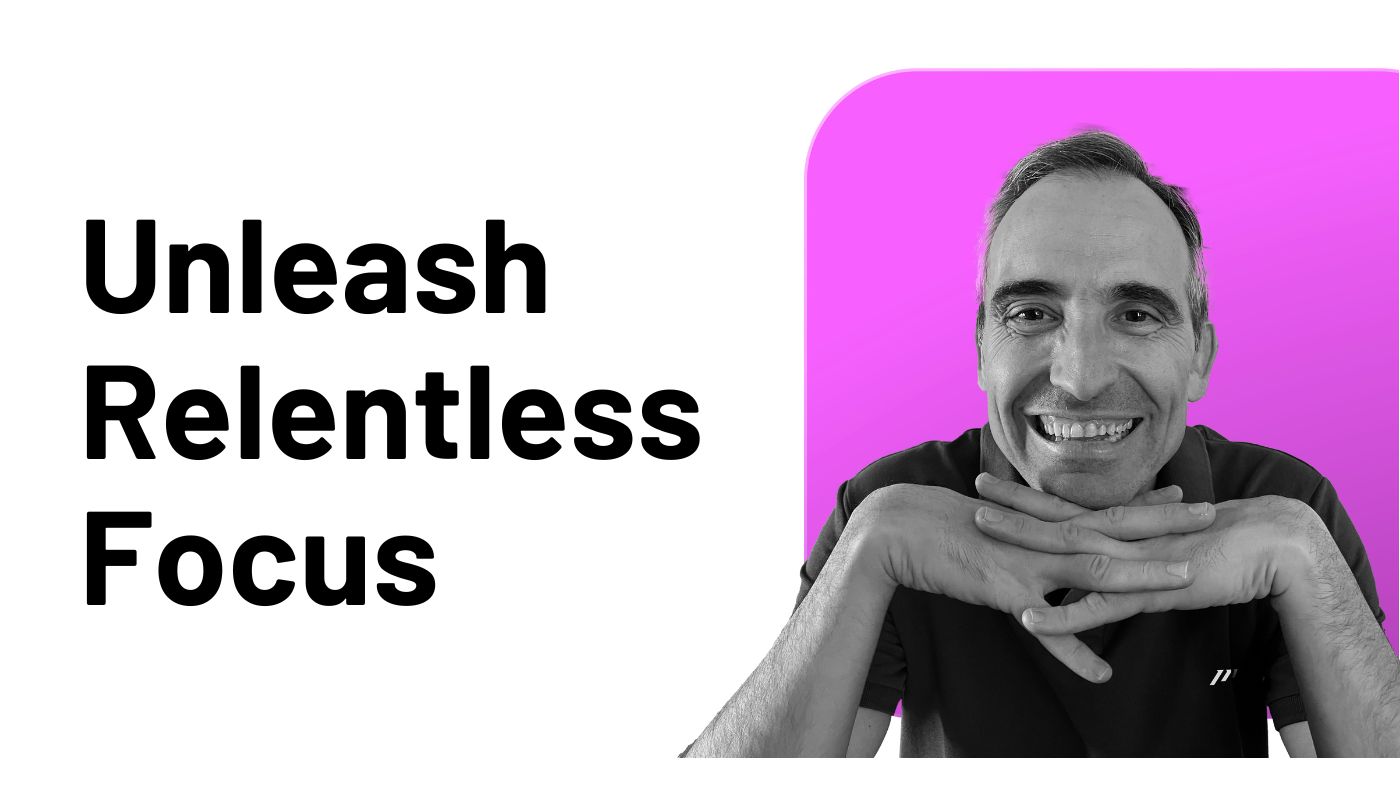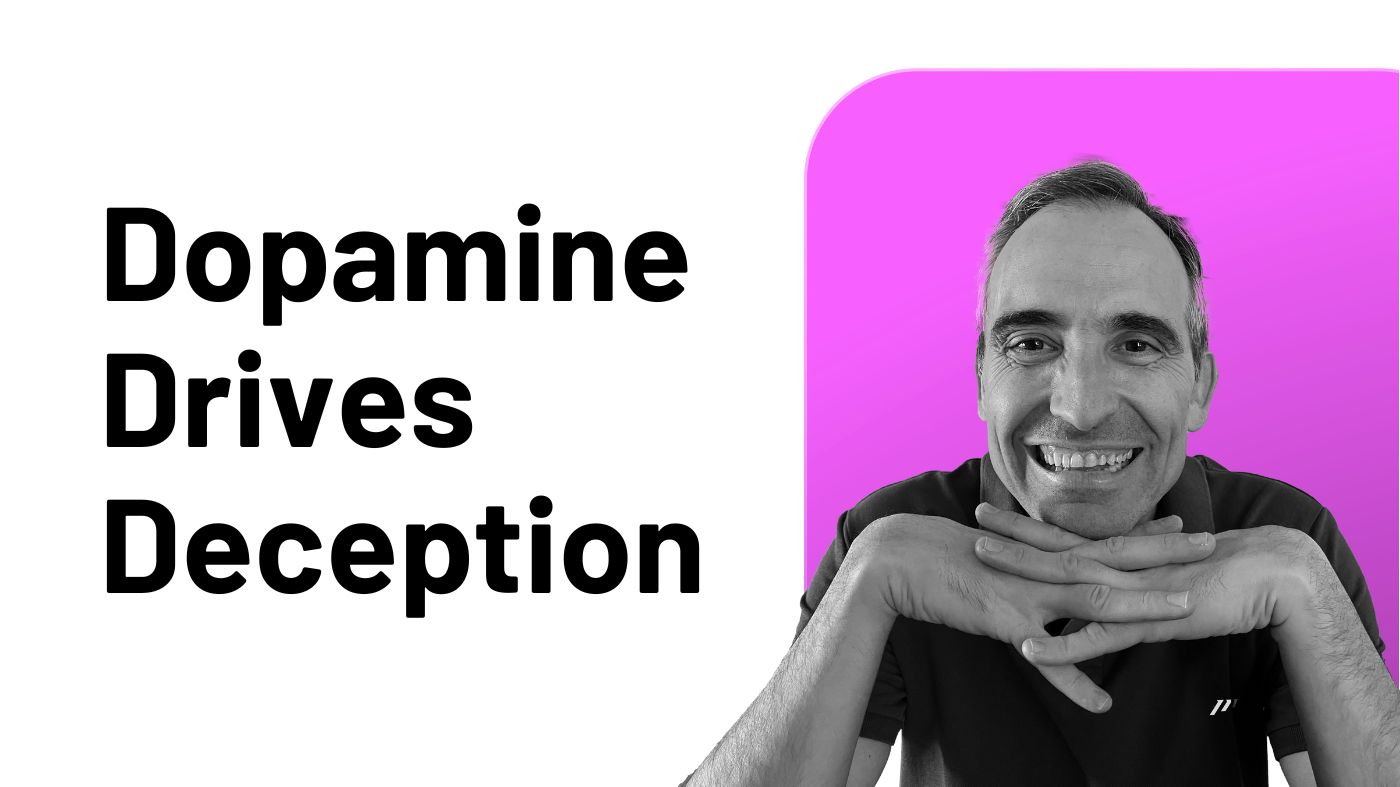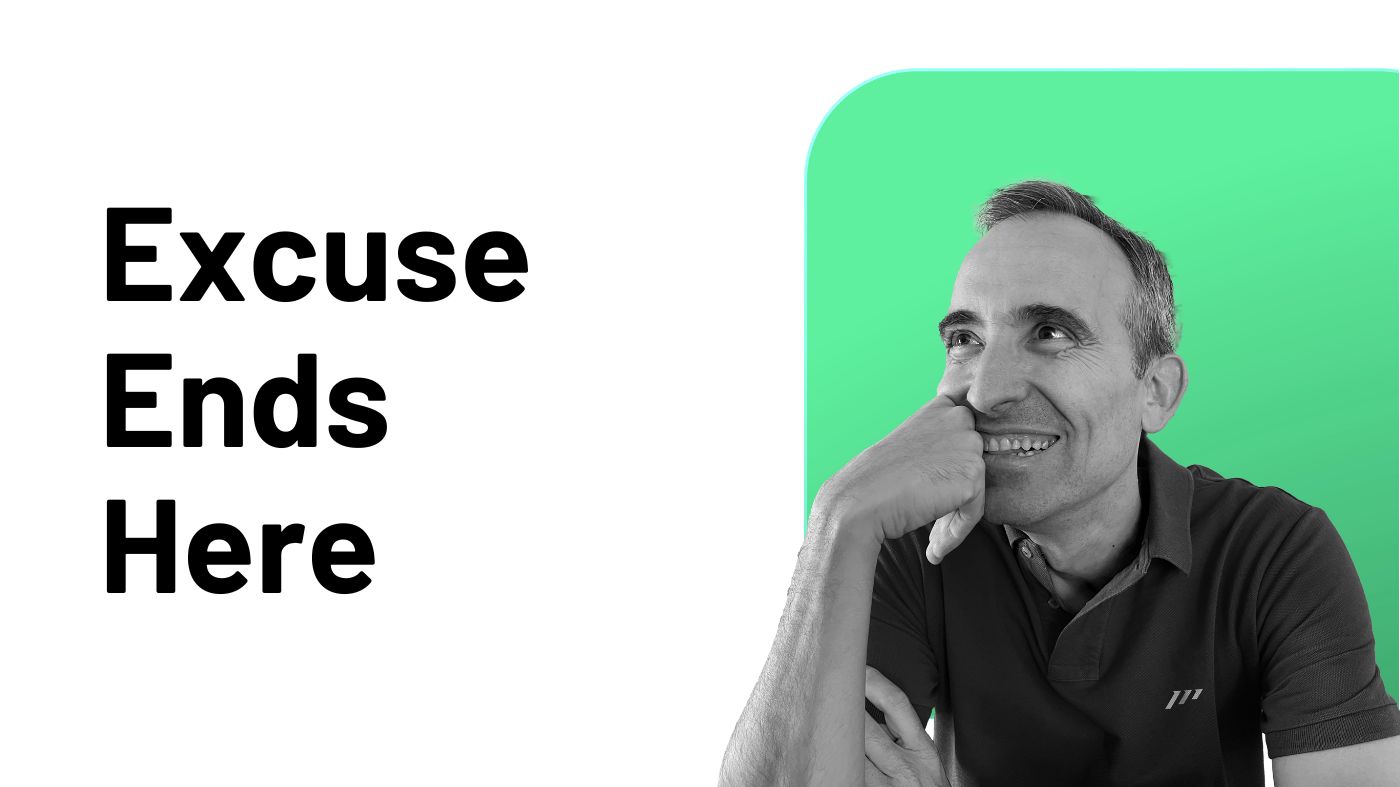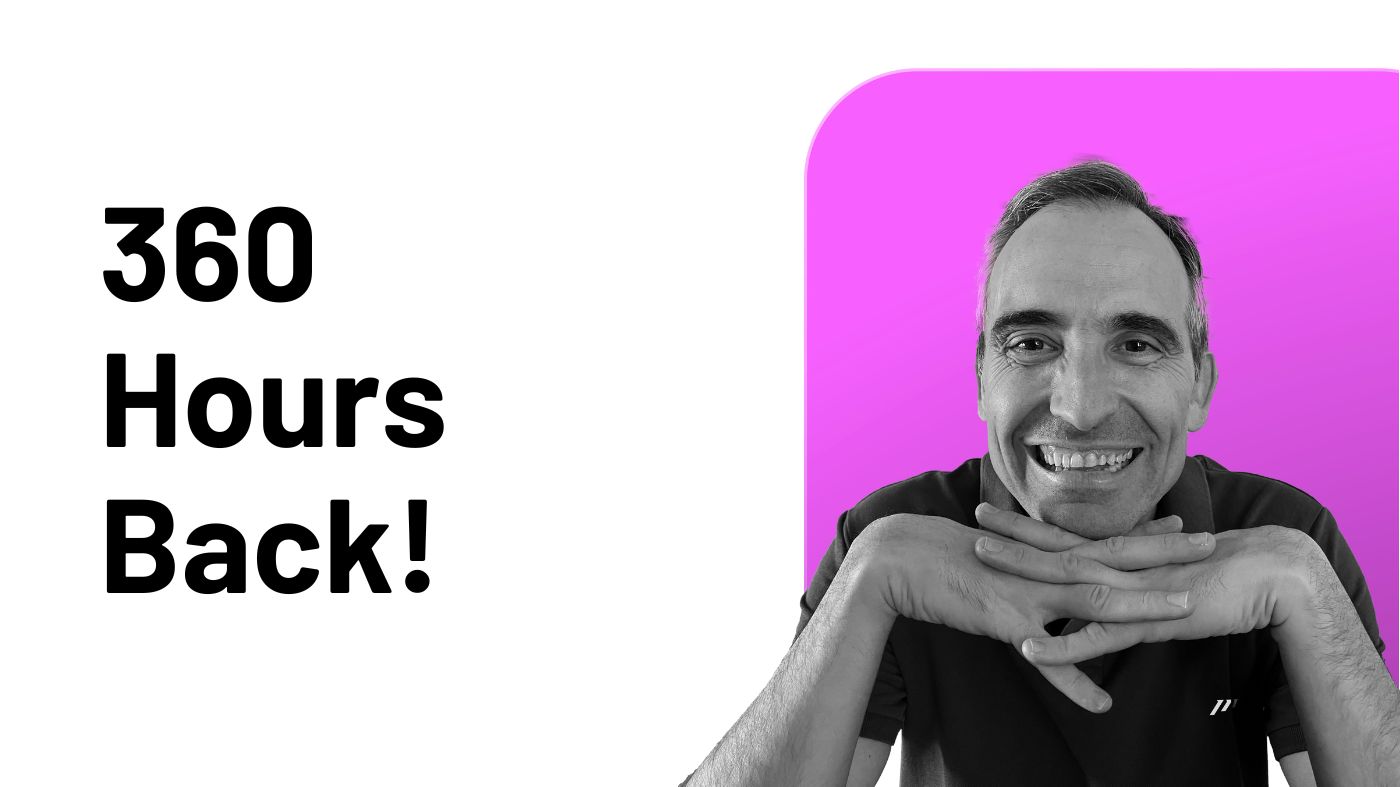In the relentless world of high-level professionals, clarity and focus aren’t just productivity boosters; they’re survival tools.
As someone who’s worked alongside countless C-suite executives, entrepreneurs, and directors, I’ve witnessed firsthand how the inability to focus can transform even the most brilliant minds into overwhelmed decision-makers drowning in an ocean of demands.
If you’re struggling to cut through the noise and find your flow state, you’re not alone.
The modern workplace has engineered an environment that’s actively hostile to deep concentration, with studies showing the average executive is interrupted every 3-5 minutes.
But here’s the truth: reclaiming your focus isn’t about superhuman discipline or working longer hours. It’s about implementing specific, proven strategies that align with how your executive brain actually works.
In this article, I’ll share six battle-tested tactics that have helped my highest-performing clients regain their cognitive edge.
These aren’t theoretical concepts; they’re practical approaches you can implement immediately to transform how you work.
Let’s dive in.
1. The Clean Slate Migration Strategy
The Problem: As a high-performer, you’ve likely invested in multiple productivity systems and digital tools over the years.
But when it’s time to evolve, the thought of migrating everything: your notes, tasks, and projects becomes so overwhelming that you either abandon the change entirely or create a chaotic hybrid system that’s worse than what you had before.
The Solution: The Clean Slate Migration Strategy
Forget what you’ve been told about comprehensive migrations. They’re motivation killers that consume precious mental bandwidth you can’t afford to waste.
The Clean Slate approach works by acknowledging a fundamental truth: not all information deserves to be carried forward.
Most professionals find that only 10-20% of their historical data remains relevant to their current priorities.
-
Start Fresh: Begin with your new system completely empty, treating it as a clean canvas rather than trying to replicate your old setup.
-
Build Forward: Create a structure in your new tool that capitalizes on its unique strengths, not one that mimics your previous system.
-
Use Reference Mode: Keep your old system as a read-only archive. When you need something, look it up there.
-
Migrate by Need: After referencing something in your old system, decide if it deserves a spot in your new environment. If yes, transfer it, but adapt it to your new structure rather than copying it verbatim.
-
Set a Sunset Date: Establish a timeframe (typically 3-6 months) after which you’ll evaluate whether the old system can be archived permanently.
Real-World Impact: One of my clients, a CMO of a big company, was paralyzed by the thought of moving 3,000+ notes from Evernote to a more robust tool.
Using this approach, she had her new system fully operational within a week, transferring only the 15% of content that actually mattered to her current priorities.
The mental clarity she gained from this selective approach gave her back approximately 5 hours of productive time weekly.
2. The PEA Workflow: Aligning Daily Actions with Strategic Goals
The Problem: You have strategic objectives and ambitious goals, but your day gets consumed by an avalanche of urgent-but-not-important tasks. By 5 PM, you’ve been busy all day but haven’t moved the needle on what truly matters.
The Solution: The PEA Workflow (Plan, Execute, Align)
Traditional priority systems (High/Medium/Low or 1/2/3) fail executives for a fundamental reason: they create false equivalencies and force you to waste mental energy on meaningless distinctions. What’s the real difference between a “medium” and a “low” priority task? The answer is subjective and ultimately unhelpful.
“If you have more than three priorities, you don’t have any.” — Jim Collins
This traditional approach also creates a dangerous blind spot.
When only “high priority” tasks seem important, the so-called “low priority” tasks get overlooked. Yet often, it’s precisely these supposedly less urgent tasks that build the foundation for significant achievements over time.
The truth is that setting priorities is fundamentally about Time Management.
When you label something “high priority,” what you’re really saying is: “I should do this before other things.”
The PEA Workflow eliminates this cognitive burden by reframing priorities around three essential questions every executive must answer:
-
PLAN: When am I going to do this? (Time allocation)
-
EXECUTE: What do I do now? (Immediate focus)
-
ALIGN: Am I doing what I should be doing? (Strategic relevance)
If you can answer these three questions clearly and immediately, your productivity management system is working perfectly. You have full control over your action world.
This approach works because it transforms abstract priority concepts into concrete decisions about time allocation, immediate focus, and strategic relevance.
Real-World Impact: After implementing the PEA Workflow, the CEO of a mid-sized tech company discovered that 68% of his “high priority” tasks weren’t aligned with any strategic objectives.
By ruthlessly filtering his task list through the PEA lens, he reduced his active tasks by 70% while accelerating progress on key initiatives by 40% in just one month.
3. The Weekly Planning Cascade: Connecting Quarterly Vision to Daily Execution
The Problem: Even with a clear prioritization system like PEA, many executives struggle with the actual implementation process. Your quarterly goals often remain disconnected from your daily work, leaving you with a sense that you’re not making progress on what truly matters.
The Solution: The Weekly Planning Cascade
While the PEA Workflow helps you determine what deserves your attention and when, this cascade system provides the practical implementation process. It bridges the execution gap with a five-step approach that turns your prioritized tasks into a realistic weekly plan.
This approach creates a deliberate flow from your big-picture goals down to the specific tasks that deserve your attention each day:
1. Brain Zen
-
What it is: A comprehensive weekly review that ensures nothing falls through the cracks
-
How to implement:
-
Block 30 minutes every Monday morning.
-
Review all tasks from your Project Management and Task Management systems that need attention this week.
-
Include “Speedies” (quick tasks under 5 minutes).
-
Complete this step when you’re 100% confident nothing important is missing.
2. Goal Alignment
-
What it is: Identifying which tasks directly support your strategic objectives.
-
How to implement:
-
Select no more than 5 “Weekly Goals” that connect to your quarterly objectives.
-
Visually distinguish these tasks in your system (star, flag, or special icon).
-
Be ruthlessly selective; overcommitting leads to underperforming.
3. Schedule
-
What it is: Assigning each task to a specific day of the week.
-
How to implement:
-
Distribute your 5 Weekly Goals across different days.
-
Use a planner that integrates tasks and calendar events.
-
Assign remaining tasks to specific days (without worrying about exact times yet).
4. Balance
-
What it is: Creating realistic daily workloads with buffer time.
-
How to implement:
-
Allocate 4-6 hours for planned work each day.
-
Reserve 2-4 hours as buffer time for unexpected issues.
-
If your planned work exceeds 6 hours, postpone less crucial tasks.
-
Prioritize Weekly Goals and routines.
5. Re-balance
-
What it is: A quick final check to ensure your plan is realistic and balanced.
-
How to implement:
-
Verify each day has at least one Weekly Goal.
-
Confirm no day exceeds 4-6 planned work hours.
-
Ask: “Does this plan feel achievable and balanced?”
“Plans are nothing; planning is everything.” — Dwight D. Eisenhower
While this weekly system creates your framework, daily execution requires refinement. Each morning, spend 5-10 minutes adjusting your plan:
-
Review today’s tasks.
-
Assess feasibility based on current circumstances.
-
Identify your single “Highlight of the Day”.
-
Arrange tasks in sequential order (no multitasking).
-
Execute one task at a time.
Real-World Impact: A VP of Operations at a healthcare company implemented this system and reduced her working hours from 65+ to under 50 while completing 40% more strategic initiatives. The key was the discipline to postpone non-essential tasks and the clarity that came from having a structured cascade from quarterly goals to daily highlights.
4. The Momentum Method: Harnessing Your Natural Focus Cycles
The Problem: You’ve experienced those rare, magical days where you accomplish more in three hours than you normally do in three days. But these periods of intense focus and productivity seem to appear randomly, leaving you wondering how to create them on demand.
The Solution: The Momentum Method
While our previous strategies help you organize and plan your work, this method addresses something equally important: the quality of your focus and energy when actually executing tasks.
Most executives have been taught that productivity is about rigid discipline and forcing themselves to focus. This approach ignores a fundamental truth about how high-performance focus actually works: it’s cyclical, not linear.
The Momentum Method acknowledges this reality and gives you a framework to recognize, harness, and extend your natural focus cycles.
What Is Momentum?
Momentum is that state where you feel an almost magnetic pull toward a particular task or project. When you’re in this state, you experience:
-
Complete absorption in the work.
-
Exceptional mental clarity.
-
Freedom from external worries.
-
Time distortion (hours pass like minutes).
-
Heightened energy rather than depletion.
The crucial insight is that Momentum isn’t something you can force or schedule; it emerges naturally when certain conditions align. However, you can create an environment where it’s more likely to occur and learn to recognize its early signs.
Implementing the Momentum Method:
Instead of fighting against your natural energy rhythms, this method teaches you to work with them through five key practices:
-
Momentum Mapping: For one week, track when you naturally feel most drawn to Deep Work. Note the time of day, what you ate beforehand, your sleep quality, and what triggered the momentum state. Look for patterns.
-
Environment Design: Create a dedicated “Momentum zone” in your workspace free from interruptions. This becomes a trigger for your brain to enter flow state.
-
The 15-Minute Rule: When you feel even a hint of Momentum building for an important task, immediately clear your schedule for at least 15 minutes to engage with it. This short commitment is usually enough to determine if true Momentum is emerging.
-
Momentum Riding: If Momentum continues after 15 minutes, extend your focus period by canceling or postponing lower-priority commitments. This is one of the few legitimate reasons to rearrange your carefully planned schedule.
-
Strategic Redirection: Learn to channel spontaneous Momentum toward strategic priorities. If you feel Momentum building for a non-essential task, acknowledge the energy but gently redirect it toward something aligned with your key objectives.
The Momentum Paradox: To make this approach work, you must maintain the seemingly contradictory mindset of being both highly structured in your planning and completely flexible in your execution when Momentum emerges.
This paradox reflects a deeper truth about human performance: our most effective work happens not when we force ourselves to focus, but when we create conditions where focus naturally arises.
Real-World Impact: A tech founder I worked with discovered that his Momentum periods most reliably occurred after high-intensity morning exercise followed by 20 minutes of meditation. By restructuring his morning routine and keeping his calendar clear until 11 AM, he increased his Deep Work output by 60% while actually reducing his total working hours.
5. The Cross-Tool Integration Framework: Creating a Unified Workflow Across Multiple Platforms
The Problem: As a high-level professional, you’re forced to use multiple digital tools; your company’s project management system, your personal task manager, your team’s collaboration platform, plus specialized tools for different aspects of your work. Switching between these disconnected systems fragments your attention and creates information silos.
The Solution: The Cross-Tool Integration Framework
While the previous methods help you plan and focus, they can be undermined by a fragmented digital environment. This framework addresses the technological aspect of focus.
Modern work demands specialized tools, but the cognitive cost of context-switching between them is enormous. Research shows professionals lose up to 40% of their productive time to application switching and reorientation.
The Cross-Tool Integration Framework creates a unified ecosystem from your disparate tools without requiring complex automation or IT support.
Core Principle: Instead of trying to force all your work into one tool (impossible) or constantly jumping between disconnected systems (inefficient), create strategic bridges between your tools that allow information to flow seamlessly.
This approach acknowledges that tool fragmentation is inevitable, but its negative impact on focus is not. By creating a coherent system across your digital workspace, you minimize the mental friction that disrupts deep focus.
Implementation Steps:
- Identify Your Tool Categories:
Begin by taking inventory of your digital landscape and organizing it into functional categories:
-
Thinking Tools: Where you develop ideas (e.g., Heptabase, Roam Research, Obsidian, Tana).
-
Task Management Tools: Where you track actions (e.g., Todoist, Asana).
-
Communication Tools: Where team interaction happens (e.g., Slack, Teams).
-
Resource Tools: Where information is stored (e.g., Google Drive, Notion).
-
Create Bi-Directional Links:
Once you’ve mapped your tools, establish consistent connections between related items across platforms:
-
Add a standardized “Links” field to databases in each system.
-
When creating an entry in one system that relates to another, immediately create the corresponding record and link them.
-
Use a consistent format for all cross-system references (e.g., “PM-0123” as a unique ID).
-
Implement the “Home Base” Concept:
Next, establish a central command center that serves as your daily starting point:
-
Designate one tool as your primary starting point each day (I highly recommend a planner such as Sunsama).
-
Ensure this tool contains pointers to everything else in your workflow.
-
Begin and end each day in this system to maintain orientation.
-
Establish a “Single Source of Truth” for Each Information Type:
Eliminate redundancy by giving each type of information a clear home:
-
Tasks live ONLY in your Task Manager.
-
Meeting notes live ONLY in your Note-taking system.
-
Reference materials live ONLY in your knowledge base.
-
Never duplicate; always link.
-
Use URL Schemes for Instant Navigation:
Finally, create frictionless pathways between your tools:
-
Most professional tools support direct linking via URLs.
-
Create a reference document with your most-used deep links if necessary.
-
Add these to your main tools for one-click access to important views.
Real-World Impact: The COO of a financial services firm implemented this framework across her organization’s mandatory tools (Salesforce, Microsoft 365) and her preferred personal systems (Evernote, Things). By creating consistent linking conventions and a “home base” dashboard in Notion, she reduced context-switching by 70% and cut meeting preparation time from 30 minutes to 5 minutes, as all relevant information was instantly accessible regardless of which system contained it.
6. Shallow Work vs. Deep Work
The Problem: Your calendar is a chaotic mix of strategic thinking, administrative tasks, meetings, and reactive work. By treating all work the same way, you end up applying deep focus to trivial matters while giving complex strategic challenges only fragmented attention.
The Solution: The Depth-Calibrated Workday
The previous frameworks help you organize, plan, and navigate your tools. This final method focuses on optimizing your most precious resource: your cognitive capacity.
Building on Cal Newport’s groundbreaking work on Deep Work, the Depth-Calibrated Workday is a practical framework for executives to strategically deploy their cognitive resources throughout the day.
The Critical Insight: All work is not created equal. The value you create as a high-level professional comes primarily from applying deep focus to complex problems; yet most workdays are structured in ways that make this nearly impossible.
The Work Depth Spectrum:
The first step in calibrating your workday is recognizing that tasks fall along a spectrum of cognitive demand.
Instead of the simple Deep/Shallow binary, professional work exists on a spectrum with four distinct categories:
-
Depth-Critical Work (Level 3): Work that creates exponential value, requires full cognitive capacity, and where interruptions set you back significantly (strategic planning, complex problem-solving, creative ideation).
-
Focus Work (Level 2): Work that requires sustained attention but can tolerate brief interruptions (detailed analysis, important writing, complex correspondence).
-
Process Work (Level 1): Work that requires attention but follows established patterns (routine reporting, standard communications, familiar presentations).
-
Administrative Work (Level 0): Work that can be done on autopilot or while partially distracted (most email, routine approvals, basic scheduling).
Implementation Framework:
Once you understand these distinctions, you can strategically structure your day to match cognitive demands with your energy levels:
-
Depth Audit: Categorize all your recurring work activities on the 0-3 scale above. Most executives are shocked to discover they spend less than 5% of their time on Level 3 work despite it delivering the majority of their value.
-
Energy Mapping: Identify your personal high-energy periods throughout the day (typically 1-2 blocks of 2-3 hours). These are your “golden hours” that must be protected for Level 3 work only.
-
Calendar Restructuring:
-
Block your golden hours for Level 3 work first.
-
Schedule Level 2 work in 60-90 minute blocks during moderate energy periods.
-
Batch all Level 0-1 work into low-energy periods.
-
Create transition buffers between different work depths.
-
Depth Signaling: Establish clear signals to your team about your current work depth:
-
Level 3: Complete unavailability (door closed, status indicators, automatic email responses).
-
Level 2: Urgent interruptions only.
-
Level 1: Open to questions and brief discussions.
-
Level 0: Fully available.
-
Depth Discipline: The hardest but most crucial element: ruthlessly defend your depth allocations, especially by:
-
Never allowing Level 0-1 work to expand into Level 3 time.
-
Immediately rescheduling disrupted Level 3 blocks.
-
Tracking your actual depth distribution weekly and recalibrating.
The power of this approach comes from its alignment with cognitive science.
Your brain processes different types of work in fundamentally different ways, requiring varying levels of neural activation and attentional resources. By matching task demands to your energy states, you optimize both performance and recovery.
Real-World Impact: After implementing the Depth-Calibrated Workday, the CEO of a mid-sized manufacturing company increased his Level 3 work from 4 hours per week to 10 hours per week while reducing his overall working hours.
This strategic reallocation of cognitive resources allowed him to develop a market expansion strategy that increased company revenue by 28% within six months, something he’d been “too busy” to tackle for nearly two years.
Conclusion: The Focus Integration Strategy
Each of these six tactics addresses a critical dimension of professional focus:
-
The Clean Slate Migration Strategy frees you from the cognitive burden of legacy systems.
-
The PEA Workflow clarifies what truly deserves your attention.
-
The Weekly Planning Cascade connects your big-picture vision to daily execution.
-
The Momentum Method helps you harness your natural focus cycles.
-
The Cross-Tool Integration Framework eliminates fragmentation across your digital ecosystem.
-
The Depth-Calibrated Workday ensures your cognitive resources are deployed strategically.
These approaches aren’t isolated tactics but interconnected elements of a comprehensive focus system. Together, they address the three fundamental challenges that derail professional focus: unclear priorities, fragmented workflows, and misaligned cognitive resources.
While each approach is powerful independently, the transformative impact comes when you integrate them into a coherent productivity system.
Start by implementing the one that addresses your most pressing focus challenge, then gradually incorporate the others.
Don’t feel overwhelmed by trying to implement everything at once.
These methods are designed to build upon each other, creating an upward spiral of increasing focus and clarity. Most executives find that mastering just one approach creates immediate benefits that fuel motivation to adopt the others.
Remember: The ability to focus isn’t just a productivity skill; it’s the fundamental executive capacity that separates extraordinary leaders from merely competent ones.
Your competition isn’t just other companies; it’s the constant pull of distraction in a world designed to fragment your attention.
Master these six approaches, and you’ll develop an unbeatable competitive advantage: the ability to bring your full cognitive capacity to the challenges that truly matter.




